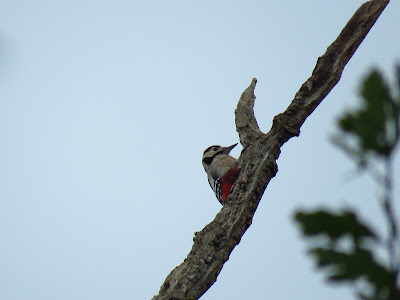
After the WEBS survey at Pickering Park I headed to Brickyard Lane to check Redcliff again. I park near the end of the lane and walk towards the Humber on this wooded lane. What a different day to last week's: cool, cloudy, and still, with an hour to high tide as I arrived. I explored around Brick Lane first. A skein of Pink-footed geese flew over NE, a surprise as so early, but only on Saturday I thought I heard their calls overhead as I left the house.
As I return to the lane, I flush a Grey Wagtail by the large puddle.
There is a mixed flock of tits, with Blue, Great, Long-tailed and a surprise Marsh tit, which repeatedly returns to an elder. A Treecreeper is also about.
In the middle section of Redcliff I spot a Sea Aster bee female on a Sea Aster. It is the only one I see today. I wonder if there are many places where both Ivy and Sea aster bees live in the same area.
As I walk by the recently flooded saltmarsh, I notice thousands of tiny snails on the mud, they are Dun Sentinels, Assiminea grayana, a tiny snail that lives only in this saltmarsh habitat in estuaries.
I climb the metal steps and look for ivy nearby. There is plenty on the ground, and immature ivy climbing trees, but the tree just above the nesting aggregation has had its mature ivy cut down. There are a few some mature ivy branches, the ones that produce flowers, but no large specimen like the one at Brickyard lane. I return by the beach, now much more exposed by the tide. The only thing of note on my return is the calling woodpecker at Brickyard lane.























No comments:
Post a Comment